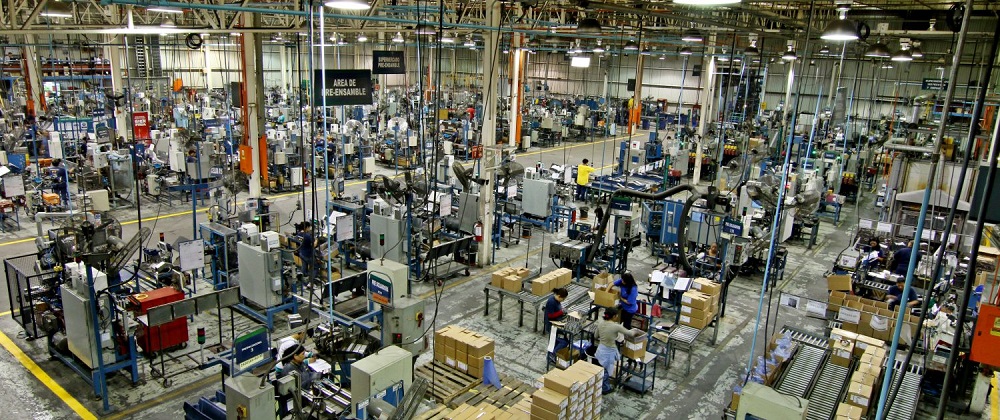Related Articles
Item test relation with mass production. The manufacturing of vast quantities of standardized products through the usage of automation technology and assembly lines is known as mass production.
It is also known as series production, flow production, repetitive flow production, or serial production.
The main goal of mass production is to produce a large number of similar products efficiently.
To achieve a high volume of products along with careful quality control, division of labor, and organization of material flow, we use mechanization. Military organizations initially demanded large quantities of standardized products like uniforms and weapons.

Assembly lines
Mass production systems for items made of several different parts are generally organized into assembly lines.
The assemblies pass by on a conveyor or are hung fro a monorail of overhead crane in case they are heavy.
Factories that create complex products will not have one assembly line. They will have many auxiliary assembly lines that will be feeding sub-assemblies to the main assembly line.
Mass production has several advantages.
If the production is monitored strictly, it is possible to obtain a precise assembly of production line machines that have fixed parameters. As a result, mass-produced products have significantly lower labor costs. Far fewer workers are required to work on an automated assembly line.
The increased efficiency and automation also means that products are mass-produced at a much faster rate. Due to this, an organization’s products can get an edge when it comes to prompt distribution and marketing. The organization can expect a competitive advantage and higher profits.
Mass production is automated to the greatest extent possible. The combined expenditure per unit of product is reduced while energy and capital are increased.
The Disadvantages of Mass production
The lower costs and faster rate of production come at a very steep price. Setting up an automated assembly line means you have to purchase expensive machinery.
It also requires a significant amount of time and resources to set up. In case of a design error in production, an extensive amount of investment will be needed to redesign and rebuild the mass production processes.
Changes may even be required in some cases where there aren’t any errors present.
For example, a pharmaceutical company will have to completely revamp their already existing assembly lines for a popular drug if there is a regulatory change enforced by the Food and Drug Administration (FDA) that requires a different production process.
The production process is rigorous and not flexible at all, so adapting it is complicated. Furthermore, if one area of mass production is interrupted, the entire production process needs to stop until a repair is made.
Even though you’ll be saving a lot of money on labor costs, it will come at the expense of your employees lacking motivation for their work as the tasks they perform is very repetitive. Expect to have low employee morale and increased turnover rates.
Item-total Correlation
It’s a psychometric test where an individual is given a set of tests or questions. The goal is to produce a useful single quantity for every individual, which is then used to compare that individual with the others in a given population.
The test is conducted to check if the items (questions or tests) are similar to those from other tests across the population.
The summary measure is an average of a particular type and is weighted where required. The item-correlation test decides if a given test should be included in the set that is averaged.
The test is performed to find inconsistencies among a set of tests compared to an averaged group of others. Any inconsistencies mean that the item must be discarded. This purifies the measure by getting rid of garbage items before the factors represented by the construct is determined.
The outcome for a specific test on an individual is at first used to produce a score. Different tests have a similar range of scores across individuals.
For a number of different tests, the average of the scores will be constructed based on the overall measure for an individual.
The Pearson correlation test is used to check whether a test behaves similarly to the others. All the items in a reliable measure must correlate well with the average of the others.
If the item correlation turns out to be small, then it means that the item is not measuring the same construct measured by the other included items. An item is dropped if the correlation value is less than 0.2 or 0.3.
Item test correlation and mass production
Judging by the descriptions of the given subjects, it’s pretty obvious how they fit in together.
The average measure of a test item is determined during the product testing phase of manufacturing.
The average measure of the final product is determined. Every batch of items produced in mass production is then compared with the average measure. It is done to ensure that every single item going to the hands of the consumer has a consistent quality.
It also ensures that the product marketed by the company is the exact same thing the consumers receive.
To automate and streamline your business processes while expanding it at a steady pace, Odoo is your best option.
Odoo is an easy-to-use business management software that helps you to run a business efficiently. Mass production and item-test correlation are both parts of manufacturing.
Odoo’s manufacturing module comes with all the bells and whistles necessary for manufacturing, including mass production.
Syncoria is a digital transformation company based in Canada and an official Odoo Ready partner.




